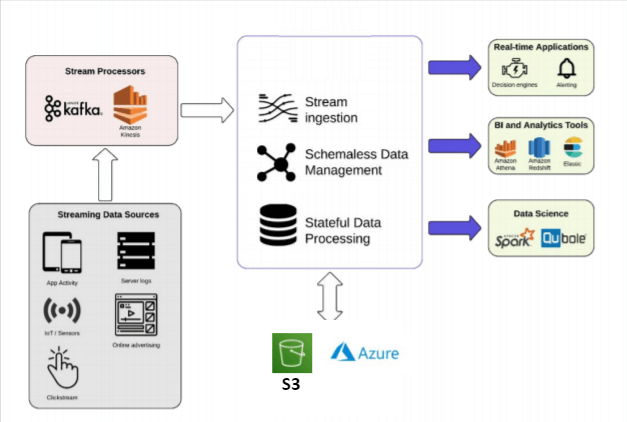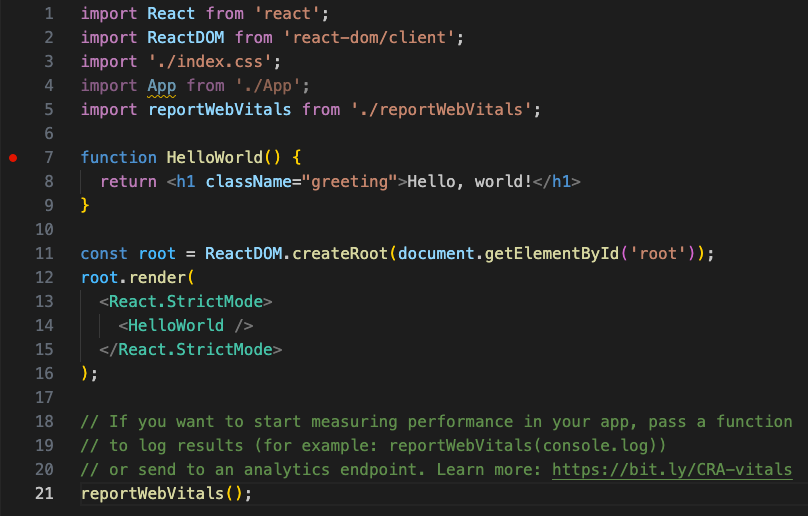TypeScript’s powerful static type system is a game-changer for modern web development, offering safety and predictability that vanilla JavaScript lacks. Among its most versatile features are Intersection Types, a mechanism for combining multiple types into a single, cohesive unit. While seemingly simple, intersections unlock sophisticated patterns for creating flexible, reusable, and robust type definitions.
Whether you’re building a complex front-end with TypeScript React or a scalable back-end with TypeScript Node.js, understanding how to effectively use intersection types is crucial. They allow developers to compose types from different sources, mix and match features, and build complex data structures without sacrificing type safety. This article provides a comprehensive tutorial on TypeScript Intersection Types, moving from fundamental concepts to advanced techniques and best practices, complete with practical code examples for real-world scenarios.
Understanding the Core Concepts of Intersection Types
At its heart, an intersection type combines multiple types into one. This new type has all the members of all the types in the intersection. The syntax is straightforward, using the ampersand (&) symbol between the types you wish to combine.
What Are Intersection Types?
If you have a type A and a type B, the intersection A & B is a new type that includes all properties from A and all properties from B. This is incredibly useful for creating types that represent an entity with multiple facets or capabilities.
Let’s consider a simple example. Suppose we have a Person type and a Loggable type. A person has a name, and a loggable entity has a logging function.
// TypeScript type aliases for our base types
type Person = {
name: string;
age: number;
};
type Loggable = {
log: (message: string) => void;
};
// Create a new type by intersecting Person and Loggable
type LoggablePerson = Person & Loggable;
// Now, let's create an object of this new type
const john: LoggablePerson = {
name: "John Doe",
age: 30,
log: (message) => {
console.log(`[LOG] - ${new Date().toISOString()}: ${message}`);
},
};
john.log(`User ${john.name} created.`);
// Output: [LOG] - 2023-10-27T10:00:00.000Z: User John Doe created.As you can see, the john object must satisfy the contract of both Person and Loggable. It needs a name, an age, and a log method. The TypeScript compiler enforces this, providing a powerful way to compose functionality.
Intersection Types vs. Interface Extension
If you’re familiar with TypeScript interfaces, you might notice that this looks similar to using the extends keyword. Indeed, we could achieve a similar result like this:
interface IPerson {
name: string;
age: number;
}
interface ILoggable {
log: (message: string) => void;
}
// Using 'extends' to combine interfaces
interface ILoggablePerson extends IPerson, ILoggable {}
const jane: ILoggablePerson = {
name: "Jane Doe",
age: 28,
log: (message) => console.log(message),
};So, what’s the difference? The key distinction lies in flexibility. The extends keyword can only be used with interfaces (and classes). Intersection types, on the other hand, can combine any type, including type aliases, primitive types, and union types. This makes them a more versatile tool for ad-hoc type composition.
Practical Applications and Real-World Examples

Intersection types truly shine when applied to real-world development scenarios. Let’s explore how they can be used in API development, front-end components, and DOM manipulation.
Combining Types for API Responses in a Node.js App
When building an API with a framework like TypeScript Express or NestJS, you often have standardized response structures. For example, every response might have a status code and a success flag, while the actual data payload varies. Intersection types are perfect for this.
Let’s define a base API response and then combine it with specific data payloads.
// --- Type Definitions ---
// A generic base for all API responses
interface BaseApiResponse {
success: boolean;
timestamp: number;
}
// Specific data payloads
interface UserData {
id: string;
username: string;
email: string;
}
interface ProductData {
productId: string;
name: string;
price: number;
}
// Use intersection types to create specific response types
type UserApiResponse = BaseApiResponse & { data: UserData };
type ProductApiResponse = BaseApiResponse & { data: ProductData[] };
type ErrorApiResponse = BaseApiResponse & { error: { code: number; message: string } };
// --- API Fetcher Function (Async TypeScript) ---
// A mock async function to fetch user data
async function fetchUser(userId: string): Promise<UserApiResponse | ErrorApiResponse> {
try {
// In a real app, this would be a database call or external API request
if (userId === "123") {
const user: UserData = {
id: "123",
username: "admin_user",
email: "admin@example.com",
};
// Return a successful response
return {
success: true,
timestamp: Date.now(),
data: user,
};
} else {
throw new Error("User not found");
}
} catch (err) {
// Return an error response
return {
success: false,
timestamp: Date.now(),
error: {
code: 404,
message: (err as Error).message,
},
};
}
}
// Example usage
fetchUser("123").then(response => {
if (response.success) {
// TypeScript knows 'response.data' exists here
console.log(`Welcome, ${response.data.username}`);
} else {
// TypeScript knows 'response.error' exists here
console.error(`Error: ${response.error.message}`);
}
});This pattern makes our API contracts clear, self-documenting, and fully type-safe. The use of Async TypeScript with Promises combined with union and intersection types provides robust error handling.
Enhancing Component Props in TypeScript React
In component-based frameworks like React, Vue, or Angular, we often build components that share base functionality but have specific variations. For instance, you might have a generic Button component and a more specific IconButton that adds an icon. Intersection types are ideal for defining props for these variations.
import React from 'react';
// Base props for any button
type ButtonProps = {
onClick: () => void;
disabled?: boolean;
children: React.ReactNode;
};
// Specific props for a button that also has an icon
type IconProps = {
iconName: string; // e.g., 'plus', 'trash', 'edit'
iconPosition: 'left' | 'right';
};
// Combine them to create the props for our IconButton
type IconButtonProps = ButtonProps & IconProps;
// The IconButton component
const IconButton: React.FC<IconButtonProps> = ({
onClick,
disabled,
children,
iconName,
iconPosition
}) => {
const icon = <i className={`icon-${iconName}`} />;
return (
<button onClick={onClick} disabled={disabled} className="icon-button">
{iconPosition === 'left' && icon}
<span>{children}</span>
{iconPosition === 'right' && icon}
</button>
);
};
// Example Usage in another component
const App = () => {
return (
<div>
<IconButton
iconName="trash"
iconPosition="left"
onClick={() => console.log('Deleted!')}
>
Delete Item
</IconButton>
</div>
);
};This approach promotes composition over inheritance, a core principle of React. It keeps our prop definitions clean, modular, and easy to extend without duplicating code.
Advanced Techniques and Common Pitfalls
While powerful, intersection types have nuances that can lead to unexpected behavior if not handled carefully. Understanding these edge cases is key to mastering them.
Handling Conflicting Property Types
A common pitfall occurs when you try to intersect two types that have a property with the same name but a different type. What happens then? TypeScript intersects the property types as well.

type WithStringId = {
id: string;
};
type WithNumberId = {
id: number;
};
// This intersection results in an impossible type
type ConflictingId = WithStringId & WithNumberId;
// Let's inspect the 'id' property
// The type of 'id' becomes `string & number`, which simplifies to `never`
// because a value cannot be both a string and a number at the same time.
function processId(obj: ConflictingId) {
// obj.id is of type 'never'
console.log(obj.id);
}
// It's impossible to create a valid object for this type:
// const invalidObj: ConflictingId = { id: ??? }; // Error!This is a critical concept: intersecting object types with conflicting primitive properties results in a property of type never, making the combined type effectively unusable. To solve this, you often need a “safe” intersection that prioritizes one type over the other. This can be achieved with TypeScript Utility Types like Omit.
Creating a “Safe” Overwrite Utility Type
Let’s create a generic utility type, Overwrite, that takes two types, T and U, and combines them, letting the properties of U overwrite any conflicting properties from T.
// A generic utility type to safely merge two object types.
// It removes keys from T that are present in U, then intersects the result with U.
type Overwrite<T, U> = Omit<T, keyof U> & U;
// Our original types with a conflicting 'id'
type BaseEntity = {
id: string;
createdAt: Date;
};
type DbRecord = {
id: number; // The database uses a numeric ID
updatedAt: Date;
};
// Use the Overwrite utility type. DbRecord's 'id' will be used.
type MergedEntity = Overwrite<BaseEntity, DbRecord>;
// The resulting type is:
// {
// createdAt: Date;
// } & {
// id: number;
// updatedAt: Date;
// }
// which is equivalent to:
// {
// id: number;
// createdAt: Date;
// updatedAt: Date;
// }
const entity: MergedEntity = {
id: 12345, // Must be a number
createdAt: new Date(),
updatedAt: new Date(),
};
console.log(`Entity ID: ${entity.id}`); // Works perfectly!This Overwrite pattern is a powerful tool in any advanced TypeScript developer’s toolkit, especially when integrating data from different systems (e.g., a database and a third-party API) that have slightly different schemas.
Best Practices and Considerations
To use intersection types effectively and maintain a clean codebase, follow these guidelines.
When to Use Intersections vs. `extends`

- Use
extendswith interfaces when you have a clear and logical “is-a” relationship. For example, aManager“is-an”Employee. This creates a clear inheritance chain that is easy to understand. - Use intersection types (
&) when you need to combine disparate, unrelated types on the fly. This is perfect for mixin patterns, combining types from third-party libraries, or creating ad-hoc types for specific functions or components.
Keep Intersections Readable
While you can chain many types together (A & B & C & D), this can quickly become unreadable and hard to debug. If you find yourself creating a very long intersection, consider if there’s a better way to model your data. It might be a sign that you should create a new, named interface that composes these types in a more structured way, perhaps using extends or by nesting objects.
Leverage Tooling
A well-configured development environment is essential. Tools like ESLint with the @typescript-eslint/eslint-plugin can help enforce best practices and catch potential issues with complex types. Furthermore, using a code formatter like Prettier ensures your type definitions remain consistent and readable across your TypeScript projects.
Conclusion
TypeScript Intersection Types are a fundamental and versatile feature for any developer serious about building scalable, type-safe applications. They provide a powerful mechanism for type composition, allowing you to mix, match, and merge types to precisely model your application’s data structures and behaviors. From defining API contracts in a Node.js back-end to creating flexible component props in a React front-end, the applications are vast and practical.
By understanding the core concepts, exploring real-world examples, and learning to navigate advanced scenarios like conflicting properties, you can leverage intersection types to write cleaner, more maintainable, and more robust code. As you continue your TypeScript journey, we encourage you to experiment with intersections and other advanced features like Union Types, Mapped Types, and Conditional Types to fully unlock the power of TypeScript’s type system.




